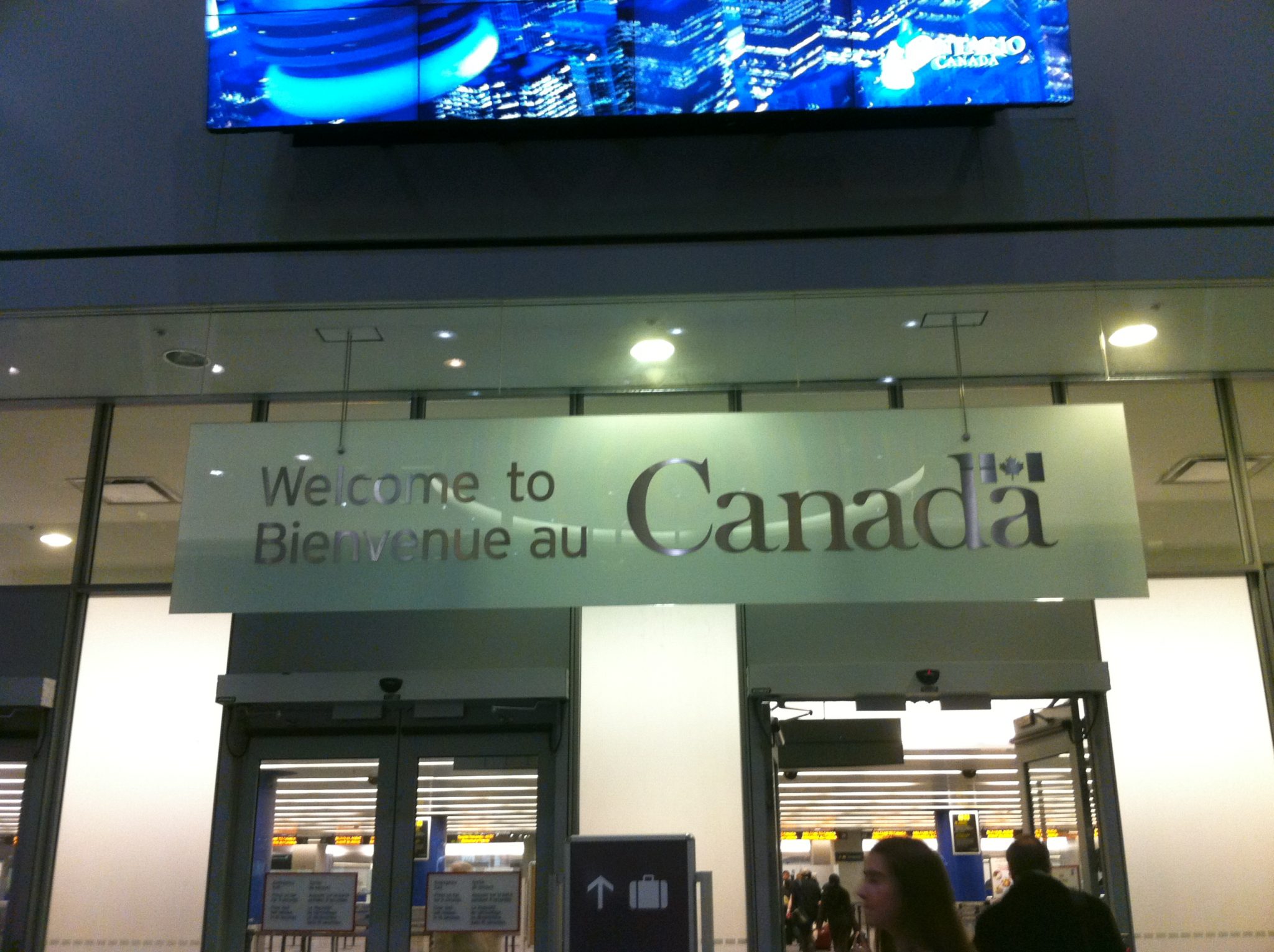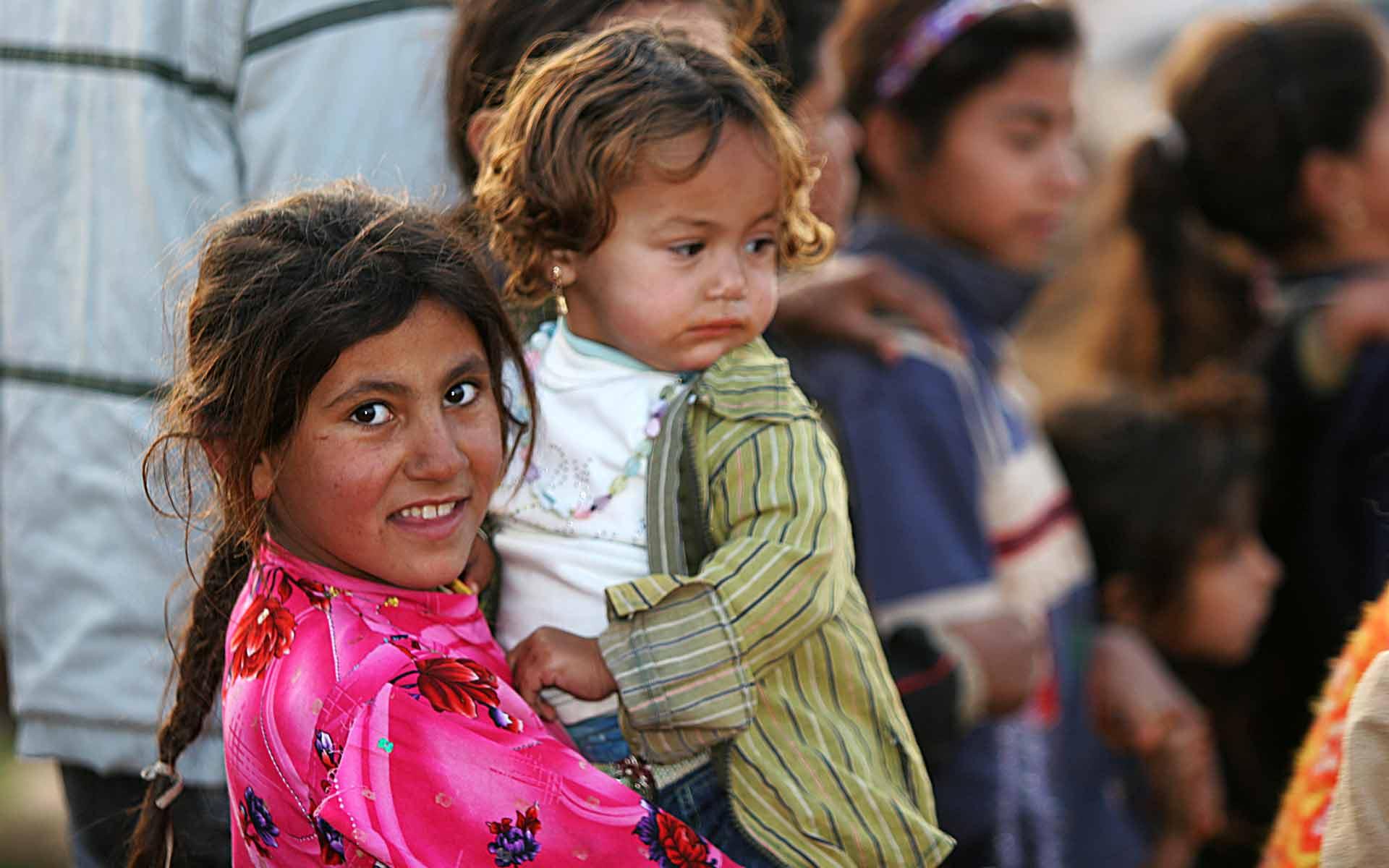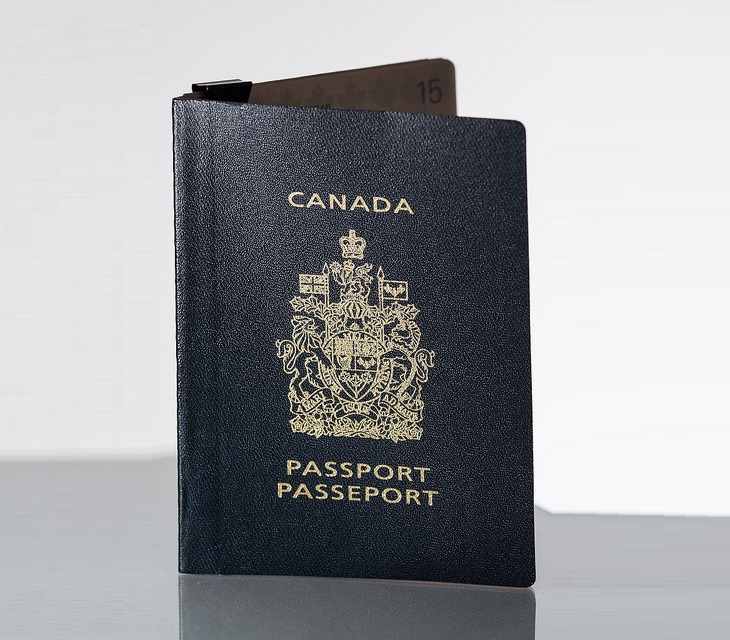Canadian Immigration Lawyers Weigh Effectiveness of Express Entry
On January 1, 2015, the Canadian Government and Citizenship and Immigration Canada introduced a new express entry system for processing applications for permanent residency. Canadian immigration lawyers realize that this not really a new immigration program, but rather an expedited process for choosing candidates through existing programs. People seeking residency through the Federal Skilled Worker Program, Federal Skilled Trades Program, and Canadian Experience Class Program now have the option to submit their application through the express entry system, with or without the aid of a Canadian immigration lawyer, and a specific express entry points system will determine their candidacy.
So how effective is this new program? According to the first permanent resident to gain status through the program, it can run quite smoothly if you are chosen. Within several days of its launch, Irish citizen Emma Hughes applied for express entry. She was drawn from the pool of applicants on January 31, submitted her full application on February 5, and was granted permanent resident status on March 26. Hughes, a chemist who works for a company producing renewable bio-fuels, had a score of 1094.
While this result is promising, Canadian immigration lawyers note that it is still very dependent on the points system that grades candidacy, and in particular, the Applicant’s ability to either have an LMIA approved job offer or a provincial nomination (to be granted 600 out of 1200 points). Applicants are awarded points out of a total of 1,200, for meeting criteria in employable skills, work experience, language proficiency, age, education, and marital status (which simply affects how many points are given for other criteria). However, in order to obtain 600 of the 1200 points, applicants must also have been accepted for a job approved by the Labour Market Impact Assessment or a provincial nomination through one of the Provincial Nominee Programs.
Like any new system, express entry has both positive and negative impacts, according to Canadian immigration lawyers. While wait times for approval have been significantly shortened, the odds of approval are also significantly decreased. Besides the points system, it appears that there is an element of luck. Canadian immigration lawyers recommend that before you consider taking the express entry route, you make sure that you meet all of the qualifications, using available data on the ranking system to ensure that you meet the proper criteria.
If you are considering applying for permanent residency for the express entry program, don’t hesitate to enlist the aid of a Canadian immigration lawyer. They have the expertise necessary to help you submit your candidacy and help you navigate every step of the process for the best possible results.
Is Canada Still Accessible to Refugees?
For refugees trying to enter Canada, immigration has become much more difficult in recent years, to the dismay of asylum seekers and refugee law offices alike. New laws, policies, and regulations have been adding blockades, both figuratively and literally, between people fleeing persecution and the stations of government that conduct refugee hearings. The result is that while the process of gaining refugee status is largely unchanged, fewer refugees are likely to begin that process in the first place.
The United Nations Refugee Convention was meant to guarantee the right of any person to flee from persecution. The convention also called upon member nations to take on the burden of hosting these refugees. Historically, Canada has been seen as a safe haven for those forced to leave their homes, but over the years, new measures in Canada immigration policy have slowly worked towards closing off our borders.
One such measure is the penalty for refugees who are deemed as “irregular arrivals.” In a crisis situation, many people are forced to place their safety – and the safety of their family – above other considerations. But when the government, to the chagrin of many refugee law offices, passed Bill C-31, it meant that anyone who arrived in Canada without using proper channels would be met with immediate detention. In the event that a person detained as an irregular arrival is granted asylum, they will be denied the possibility of permanent residency for five years, making them unable to sponsor family members overseas that are still in immediate danger.
This is not the only change instituted by the current government of Canada. Immigration for refugees from certain Designated Countries of Origin has been severely limited in a number of ways as well. Refugees from these countries, including many in Western Europe, have their claims processing expedited to keep the system clear for more “urgent” refugees. For claimants from other countries, largely in the global south, automatic background checks, assisted by biometric measures, are required. While safety and legitimacy of a claim is an important factor, this underlying differentiation, presumably based on the notion that citizens of certain countries are more likely to be committing fraud, or to be involved in criminal activity, has not gone unnoticed by refugee law offices.
With new policies, including restrictions upon refugees entering through the United States, stricter visa requirements, and the penalization of humanitarian efforts to help refugees reach our borders, it is perhaps a more difficult time than ever to find asylum in Canada. If you are seeking safe refuge in Canada and are not sure how to navigate this complicated and unwelcoming new system, you should contact an immigration and refugee law office for assistance.
Navigating the Changes to Immigration in Canada
From the 1960s until very recently, there were two main channels for immigration into Canada for those wishing to become permanent residents. The first channel was a points system. This system sought to select immigrants based on “desirable” qualities such as education and employability. The goal of this was to ensure that new entries into the country would become productive members of society. The other channel was sponsorship of a relative or spouse. In the interest of keeping families together, it was made much simpler for a person to become a Canadian resident if their spouse or another family member already lived in Canada, immigration lawyers say. There is also an economic imperative at work in such a policy: a resident is less likely to send money abroad and more likely to circulate it back into Canada’s businesses and economy if their family is here with them.
However, Citizenship and Immigration Canada has been implementing many changes lately, and Canada’s immigration lawyers have noted a drastic change in how the system works during recent years that can make it much more difficult for new arrivals to become permanent residents or even citizens.
One such change implemented by Citizenship and Immigration Canada was the new Temporary Foreign Worker Program. When the rule colloquially known as “4 In, 4 Out” was implemented on April 1, 2011, it meant that any person allowed into the country as a foreign worker on or before that date would no longer be allowed to remain in Canada after April 1, 2015. They would also not be allowed re-entry for four additional years. While the intention of the new policy was to keep jobs open for Canadian citizens when possible, Canada’s immigration lawyers are wary that it may result in a “revolving door” employment system, with employers exploiting the policy to attain labour from foreign workers without the chance for promotion.
Other changes to immigration in Canada include stricter guidelines for attaining citizenship, mandatory biometric tests on refugees from countries deemed “high-risk,” and a much more complicated system for allowing family-based immigration.
Citizenship and Immigration Canada has also introduced an “Express Entry” system intended to streamline the process for those attempting to gain entry to Canada as permanent residents. By employing a points system to evaluate which applications warrant being considered for immigration, it offers the possibility of expediting the immigration process. However, in exchange, the likelihood of an application being accepted is significantly lower. Gerami Law PC’s suggests arranging a meeting with a Canada immigration lawyer to assess whether you meet all the necessary criteria to for receiving an Invitation to Apply for permanent residency to Canada.
Canadian Immigration Lawyers Agree: Canada Should Accept More Refugees
The Annual Asylum Trends Report from the United Nations High Commissioner for Refugees (UNHCR) has ranked Canada fifteenth on a list of the top fifteen refugee-receiving countries in 2014.
According to the report, which is based on data received from 44 governments in Europe, North America, and parts of the Asia-Pacific, 51.2 million individuals were forcibly displaced in 2014 as a result of armed conflicts, persecution, human rights violations, violence and declining security and humanitarian conditions. Eight-hundred and sixty-six thousand of those were reported to have sought asylum in industrialized countries, including Canada, and many of these claims are a result of the conflicts in Syria and Iraq, which were in fact the two largest refugee producing countries in 2014.
While this number of new asylum applications is a large increase (45%) when compared to 2013, and the highest since 1992 at the beginning of the conflict in Bosnia and Herzegovina, Canadian immigration lawyers have seen a significant decrease in Canada’s acceptance of refugee claims.
Canada has long been known for welcoming refugees, and the country was ranked fifth in the world just five years ago, but as many refugee law offices agree, we’re seeing a significant downward trend. In 2014, Canada received 13,500 asylum claims, which is about one third more than the year before, but when compared to the 60,000 refugees taken in by Canada from Vietnam, Cambodia and Laos 35 years ago, this number seems dismal.
As a point of comparison, Sweden, a country with a quarter of Canada’s population admitted 75,100 refugees last year. Relative to the size of Sweden’s population, it is the country with the largest number of asylum seekers.
So, why has Canada has been making it harder for refugees to make claims?
Many Canadian immigration lawyers believe that this is the result of reforms of law and asylum policies. According to Janet Dench, executive director of the Canadian Council for Refugees, Canada’s recent focus the economic benefits of immigration may also be affecting the number of refugees that the country takes in. Refugee law offices also note that a majority of refugees who do make it to Canada aren’t even taken in by our government, but rather privately sponsored by individual Canadian citizens, charities, or private groups.
The Canadian government agreed to relocate 1,300 Syrian refugees in 2014, and another 10,000 over three years, on the condition that sixty percent are brought into Canada under private sponsorships.
If you require the services of a refugee law office for your refugee claim process, contact a Canadian immigration lawyer today!
CBSA to Consider Unassessed Risk before Removing Individuals From Canada
On April 2, 2015, the Honourable Justice Zinn of the Federal Court expanded the common law to require removal officers to consider evidence of risk that has never been assessed, when determining whether to grant a deferral of removal pending a Pre-Removal Risk Assessment (‘PPRA’). Gerami Law (Ms. Arghavan Gerami, an immigration lawyer in Ottawa) represented the Applicants in this case. The Court granted the judicial review based on administrative law principles and decided that it was unnecessary to consider the constitutionality of the Section 112(2)(b.1) of the Immigration and Refugee Protection Act (‘IRPA’).
The Applicants, with assistance from their immigration lawyer in Ottawa, had made a refugee claim to the Refugee Protection Division (‘RPD’) on the basis that they faced a risk of death or cruel and unusual treatment as Haitian nationals living in the Turks and Caicos. The RPD determined that the family could relocate to the United Kingdom to avoid their risk – otherwise known as an Internal Flight Alternative (‘IFA’) – because the Turks and Caicos Islands are a British Overseas Territory of the UK. Therefore, the RPD did not assess the risk that the family faced in the Turks and Caicos.
Section 112(2)(b.1) of the IRPA bars unsuccessful refugee claimants and their refugee lawyers from making a PRRA application for a 12-month period after their claims have been denied. The Government had scheduled the Applicants’ removal to be only 4 days before the 12-month bar would end and they would become eligible to make a PRRA. They were scheduled to be removed to the Turks and Caicos, since they were not nationals of the UK, and thus requested a deferral of their removal pending an application and decision on a PRRA.
The deferral request, prepared by their refugee lawyer, presented evidence of risk they would face upon returning to the Turks and Caicos, namely that they would face risk of death or cruel and unusual treatment as Haitians, and that their son would risk worsening his PTSD, which he developed as a result of the severe discrimination and abuse he suffered as a child of Haitian heritage. The CBSA Enforcement Officer refused their request on the basis that no new evidence of risk was presented that would warrant deferring their removal pending a PRRA, and that they had an IFA in the UK to which they could relocate as soon as they landed in the Turks and Caicos.
The Applicants, with assistance from the refugee law office, made an application for leave and for judicial review requesting that the Federal Court quash the Officer's decision and declare that statutory PRRA-bar of section 112(2)(b.1) of the IRPA is unconstitutional and, therefore, of no force or effect. Their refugee lawyer argued (1) that the Officer had fettered his discretion by failing to assess the best interests of the children, the risk to Simeon’s mental health, and the risk to the family in general on the basis of their Haitian nationality; (2) that the PRRA-bar prevented them from having a risk assessment, which violated their rights to life, liberty and security of the person under s. 7 of the Charter of Rights and Freedoms; and (3) that, unlike the recent Federal Court case of Peter v Canada, which had decided that the PRRA-bar did not violate the Charter rights of failed refugee claimants who had previously had their risk assessed, the Etienne family had never had their risk assessed.
The Canadian Association of Refugee Lawyers (‘CARL’), which had intervened in this case, argued that the PRRA-bar could result in failed refugee claimants being returned to countries where they would face violations to their rights to life, liberty or security of the person under the Charter, thereby also breaching Canada’s international law obligations. CARL submitted that, although only 2.7% of PRRA applications are successful, this also means that PRRAs have saved 2.7% of applicants from removal to death, extreme sanction, or inhumane treatment and therefore serve as an invaluable protector of Charter rights.
The Respondent agreed that the Officer had erred by not considering the best interests of the child or the new evidence risk to the child’s mental health that arose after the RPD hearing. Given this admission, the Government submitted that there was no live issue to be decided on judicial review.
The Federal Court held, on the contrary, that it was incumbent on the Court to decide whether the Officer had erred in failing to consider the risk to the child, in addition to whether he failed to consider the evidence of risk that the family had presented at the RPD, since not to do so would be a disservice to similarly situated applicants.
The Court found that the Officer had erred on both counts. It had previously been established in common law that, when determining whether to defer removal pending a PRRA, removal officers must decide whether there is sufficient new probative evidence of the applicant’s exposure to a risk upon removal. In this case, the Court interpreted the meaning of “new” evidence to include evidence that was previously presented to a decision-maker, like the RPD, but was never assessed. In the Etiennes’ case, the RPD had never assessed their risk as Haitian nationals in the Turks and Caicos, deciding only that they had an IFA in the UK. Therefore the Officer erred in failing to consider the old but un-assessed evidence of risk, as well as the new evidence of risk to the child that had developed after the RPD hearing.
The Etienne decision is significant in that it expanded the common law definition of “new” evidence in the context of deferrals by requiring removal officers to consider evidence of risk that was previously presented before a decision-maker but was never assessed. This provides increased protection to migrants affected by the PRRA-bar, in that they should be afforded a deferral to a PRRA if the RPD failed to assess their risk, which can occur if the RPD rejected their claim based on the grounds of identity or of an IFA. This decision will therefore ensure that migrants’ risk will be assessed at least once before being removed from Canada.
In addition to the judicial review decision, the Honourable Justice Zinn also made a significant decision on the Etiennes’ stay motion in August 2013. Under the amended section 48(2) of IRPA, removal officers must remove individuals “as soon as possible.” The Respondent emphasized in its submissions that this legislative change evinced the Government’s policy decision to remove persons expeditiously from Canada. The Federal Court found, however, that “as soon as possible” must mean “as soon as legally possible,” and that removals that are in breach of the Charter are illegal and are not to be enforced as soon as physically possible. This decision also provides more protection to migrants by ensuring that they are not removed to conditions that would violate their rights to life, liberty, and security of the person.





